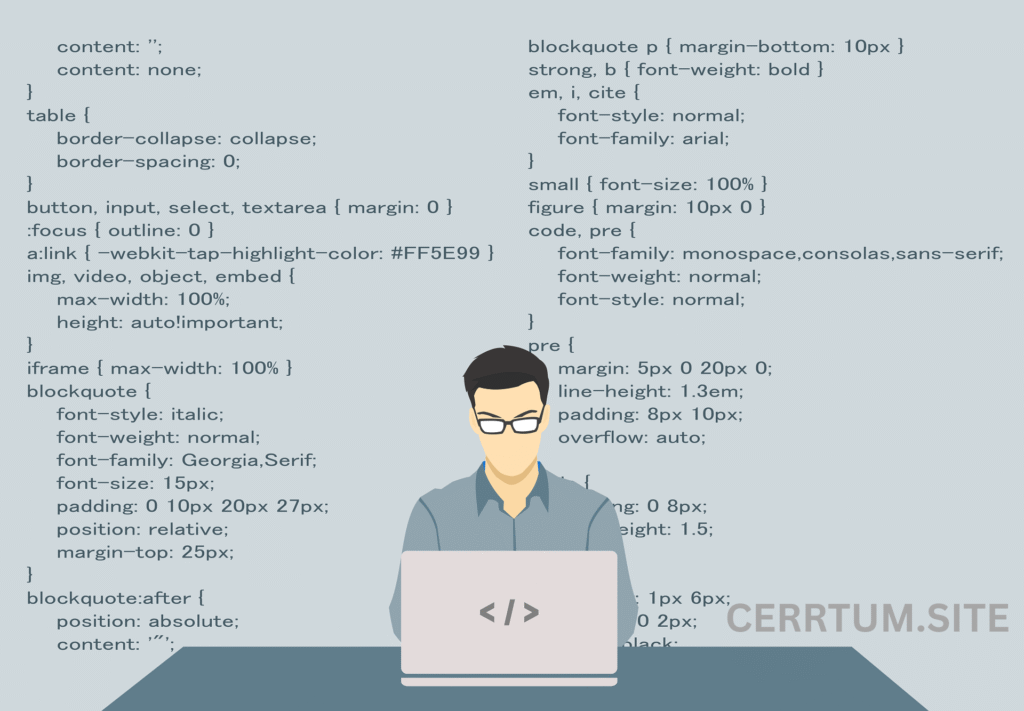Every day, the internet plays a crucial role in our lives; therefore, front-end web developers form the foundation of any captivating website or application. From basic websites to sophisticated web apps, these experts handle everything people see and interact with online. If you have looked for “front-end web developer jobs,” you are probably drawn to a rapidly expanding, creative, technically rich vocation combining visual design with code.
This post delves deeply into the field of front-end web development jobs: what the work involves, the qualifications needed, where to look for employment, and how one may start a successful career.

What Is a Front-End Web Developer?
A front-end web developer is responsible for implementing the visual and interactive aspects of a website or web application. They work on the “client side,” the part of the site users see in their browser.
While back-end developers focus on databases and server-side logic, front-end developers are responsible for managing the following aspects:
- The layout and structure of web pages
- Responsive design for mobile and desktop
- User interfaces (UI)
- Interactive elements like menus, sliders, and forms
- Integrating APIs and dynamic content
- Ensuring accessibility and browser compatibility
In short, they bring the designer’s vision to life and ensure a smooth, interactive experience for the user.
Typical Job Responsibilities
Although responsibilities may vary by company or project, typical duties for a front-end web developer include
- Translating UI/UX wireframes and mockups into code
- Writing clean, scalable HTML, CSS, and JavaScript
- Ensure websites are responsive and work across all devices.
- Debugging and resolving front-end issues and bugs
- Collaborating with designers, back-end developers, and product managers
- Optimizing performance for faster loading and better SEO
- Implementing accessibility best practices
- Staying up-to-date with front-end technologies and trends
Required Skills for Front-End Web Developer Jobs
Front-end development blends design with programming. As such, the ideal front-end developer is both technical and creative.
Core Technical Skills
- HTML (Hypertext Markup Language): Structures the content on the web.
- CSS (Cascading Style Sheets): Controls layout, design, and appearance.
- JavaScript: Adds interactivity and dynamic behavior to web pages.
Front-End Frameworks & Libraries
- React.js (very popular)
- Vue.js
- Angular
- jQuery (older but still used)
CSS Preprocessors
- SASS
- LESS
Version Control
- Git and GitHub for code collaboration and tracking changes.
Responsive Design
- We use media queries, flexbox, and grid systems to ensure that websites look good on all screen sizes.
Browser Developer Tools
- The Browser Developer Tools are utilized for inspecting elements, debugging JavaScript, and optimizing performance.
APIs and JSON
- I am responsible for retrieving and managing data from either external or internal APIs through the use of fetch() or axios.
Optional Skills
- TypeScript (JavaScript with static typing)
- Testing frameworks like Jest or Mocha
- Webpack, Vite, or other build tools
- SEO basics
- Web accessibility (WCAG standards)
Soft Skills
- Attention to detail
- Communication and collaboration
- Problem-solving
- Time management
- Creativity and user empathy
Educational Background
There’s no single required degree to become a front-end developer. The field is known for valuing skills over credentials.
Common Pathways:
- Bachelor’s Degree: In Computer Science, Information Technology, or Web Development
- Coding Bootcamps: Fast-track programs focused on practical front-end skills
- Self-Taught: Online courses, YouTube tutorials, and practice projects
- Associate degrees or Community College Programs
Ultimately, your portfolio matters more than your diploma.
Entry-Level Front-End Developer Jobs
If you’re just starting out, there are many junior roles that allow you to grow and gain experience:
- Junior Front-End Developer
- UI Developer
- Web Content Developer
- Email Developer
- HTML/CSS Developer
These roles typically involve
- Assisting senior developers
- Making small site updates
- Fixing bugs
- Building UI components
- Writing clean and maintainable code
Career Progression in Front-End Development
A career in front-end development offers a clear growth path:
- Junior Front-End Developer (0–2 years)
- Front-End Developer (2–5 years)
- Senior Front-End Developer (5+ years)
- Lead Front-End Developer/UI Engineer
- Front-End Architect or Engineering Manager
- Chief Technology Officer (CTO) or specialized paths like UX Designer or Full-Stack Developer
The more experience and skills you acquire, the more senior your role and responsibilities become.

Salary Expectations
Front-end web developer salaries vary by location, experience, and company size. Here’s a general range (U.S., 2024 data):
- Junior Developer: $55,000–$75,000
- Mid-Level Developer: $75,000–$100,000
- Senior Developer: $100,000–$135,000+
- Freelancers: $30–$100/hour depending on skill and reputation
Big tech companies and startups in major cities (like San Francisco or New York) often offer salaries well above the national average.
Where to Find Front-End Web Developer Jobs
There are many platforms where you can search for front-end development jobs:
Job Boards
- LinkedIn Jobs
- Indeed
- Glassdoor
- ZipRecruiter
- Stack Overflow Jobs
- AngelList (for startups)
- Remote OK (for remote jobs)
Freelance Platforms
- Upwork
- Fiverr
- Toptal
- Freelancer.com
Tech Communities
- GitHub
- Reddit’s r/webdev and r/forhire
- Dev.to job listings
- Discord coding communities
Furthermore, don’t underestimate the power of networking. Attend meetups, conferences, or webinars to meet people hiring developers.
How to Stand Out in the Job Market
With competition increasing, here’s how you can make your front-end job applications shine:
1. Build a Portfolio
- Showcase 3–5 well-crafted projects.
- Include a live version (via GitHub Pages, Netlify, or Vercel).
- Demonstrate responsive design, interactivity, and attention to detail.
2. Create a Personal Website
- Use your skills to create your own online resume.
- Please share your background, projects, blog posts, and contact information.
3. Contribute to Open Source
- Gain experience and visibility
- Demonstrate collaboration and coding ability.
4. Stay Up-to-Date
- Front-end technologies evolve quickly.
- Regularly learn new tools, frameworks, and trends.
5. Tailor Every Application
- Customize your resume and cover letter to the specific job.
- Emphasize relevant skills and link to portfolio items that align with the role.
Common Interview Topics
When applying for front-end web developer jobs, expect to be tested on both technical and soft skills. Here’s what interviewers often look for:
Technical Questions
- HTML/CSS trivia (e.g., “What’s the difference between id and class?”)
- JavaScript fundamentals (hoisting, scope, closures)
- DOM manipulation
- React/Angular/Vue questions
- Responsive design techniques
- API handling (AJAX, fetch)
Coding Challenges
- Algorithm problems (e.g., reversing a string, sorting an array)
- Build a responsive component (e.g., a navbar or form).
- Debugging a broken piece of code
Behavioral Questions
- How do you handle deadlines?
- Could you please describe a challenging bug you resolved?
- How do you approach learning a new technology?
Remote Front-End Web Developer Jobs
Remote work is increasingly common for developers. Many companies hire remote front-end devs globally. Benefits of remote roles include:
- Flexible schedule
- Broader job opportunities
- Better work-life balance
- Access to global markets and pay scales
When applying for remote jobs, strong communication skills and self-motivation are crucial.
Trends in Front-End Web Development
It’s crucial to keep up with the latest developments in the tech industry. Here are a few trends shaping front-end jobs:
1. Jamstack Architecture
The Jamstack Architecture leverages JavaScript, APIs, and markup to create fast and secure static websites.
2. Headless CMS
Decoupling the content management system from the front end.
3. Single-Page Applications (SPAs)
Applications built entirely in JavaScript frameworks with dynamic routing.
4. Progressive Web Apps (PWAs)
Progressive Web Apps (PWAs) mimic the behavior of native apps on the web.
5. Component-Based Architecture
Frameworks like React and Vue have popularized reusable UI components.
Conclusion
Jobs in front-end web development provide a fascinating blend of technical ability, problem-solving, and creativity. From startups to multinational companies, there are many chances across sectors regardless of your level of experience or desire to specialize further.
In this profession, success comes from creating actual projects, always learning, and demonstrating to companies how elegantly, scalably, and reasonably coded plans can be brought to life. Front-end development may be a rewarding and profitable career path with many opportunities when driven and passionate.